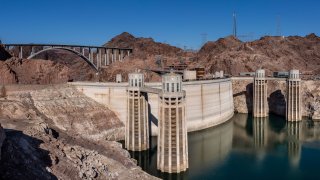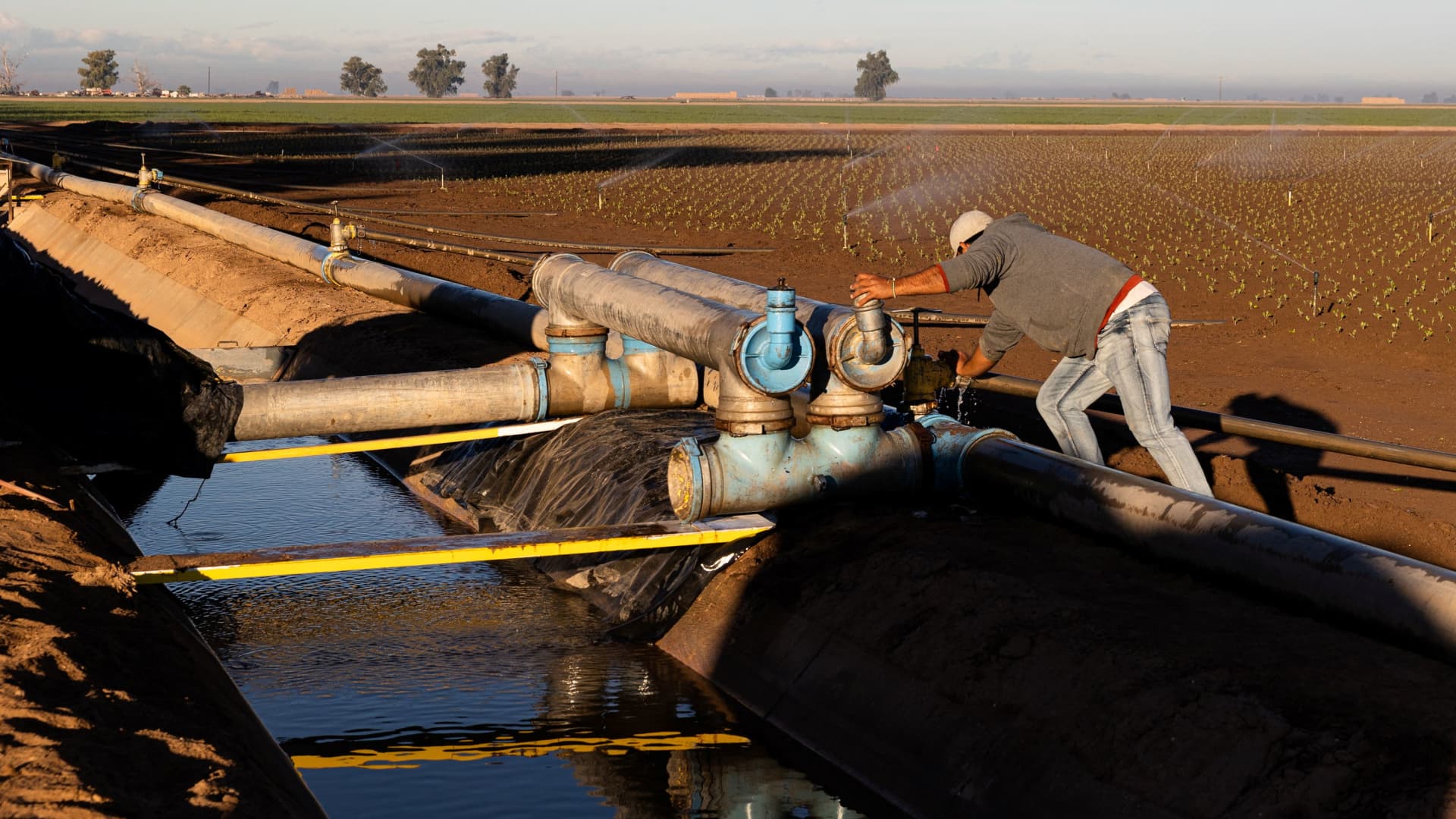
- The seven states that rely on the drought-stricken Colorado River failed to meet a Jan. 31 federal deadline to strike a deal on voluntarily cutting their water use.
- After negotiations reached a standstill, six of the seven states — Arizona, Colorado, Nevada, New Mexico, Utah and Wyoming — submitted a "consensus-based modeling alternative."
- The proposal notably excludes California, the largest user of the Colorado River. Officials said the state will release its own plan.
The seven states that rely on the drought-stricken Colorado River failed to meet a Jan. 31 federal deadline to strike a deal on voluntarily cutting water use, an impasse that could eventually prompt the Biden administration to impose cuts as the West grapples with a historic drought and record low reservoir levels.
After negotiations reached a standstill, six of the seven states dependent on the Colorado River instead submitted a proposal to the Bureau of Reclamation that outlined ways to reduce water use and factored in water that's lost because of evaporation and leaky infrastructure.
The proposal, titled the "consensus-based modeling alternative," was jointly submitted by Arizona, Colorado, Nevada, New Mexico, Utah and Wyoming.
Get top local stories in Southern California delivered to you every morning. Sign up for NBC LA's News Headlines newsletter.
The proposal notably excluded California, the largest user of the Colorado River, which supplies water to 40 million people. Officials said the state will release its own plan.
The six states' document outlined an approach to help protect Glen Canyon Dam and Hoover Dam infrastructure, water deliveries and power production and prevent the Colorado River's reservoirs from reaching "dead pool," which happens when water drops to a level so low that it can't move downstream from the dam.
The Colorado River has long been over-allocated, but climate change has worsened drought conditions in the region and reservoir levels have plummeted over the past couple decades. As the western U.S. experiences its driest two decades in at least 1,200 years, water levels in the country's two largest reservoirs, Lake Mead and Lake Powell, have reached record lows.
Money Report
Sarah Porter, director of the Kyl Center for Water Policy at Arizona State University, said the states' proposal appeared to be a "very sincere commitment" to advance negotiations over water cuts and keep reservoirs from falling to dangerous levels.
"It's easy to overlook how difficult and complex this is for every single state," Porter said. "We have to take less water out of the system, and these are the hardest negotiations to do."
Water officials emphasized the proposal was not an official agreement between states but rather a critical step toward protecting the Colorado River and eventually reaching a seven-state agreement.
"This modeling proposal is a key step in the ongoing dialogue among the Seven Basin States as we continue to seek a collaborative solution to stabilize the Colorado River system," Tom Buschatzke, director of the Arizona Department of Water Resources, said in a statement.
However, the failure to reach a deal marks the second time in six months that the seven states using Colorado River water have missed a deadline to agree on cuts under the Interior Department, which manages flows on the river.
Historically, states have been the ones to figure out how to share the Colorado River water. But a failure to reach an agreement on reductions could place the responsibility on the federal government.

The Biden administration has urged the seven states to save between 2 million and 4 million acre-feet of water, or up to a third of the river's average flow. For comparison, California is entitled to use 4.4 million acre-feet of river water per year and Arizona is entitled to 2.8 million acre-feet per year. (An acre-foot of water is about what two average households consume each year.)
So far, Arizona has taken the brunt of the government's water reductions — particularly the state's farmers, who grow produce in the desert and use nearly three-quarters of the available water supply to irrigate crops.
The alternative outlined by the six states proposes water cuts that would nearly reach the lower end of 2 million acre-feet that federal officials have urged, with nearly all of the mandatory cuts focused on Arizona, California and Nevada.
The proposal also calls for imposing "voluntary conservation measures" in Colorado, New Mexico, Utah and Wyoming.
Becky Mitchell, director of the Colorado Water Conservation Board, said this approach "appropriately distributes the burden across the Basin and provides safeguards for the Tribes, water users, and environmental values in the Upper Basin."
The Bureau of Reclamation is set to release in March a draft of its proposal on how it operates Glen Canyon and Hoover dams and will consider the six states' letter as part of that plan.







